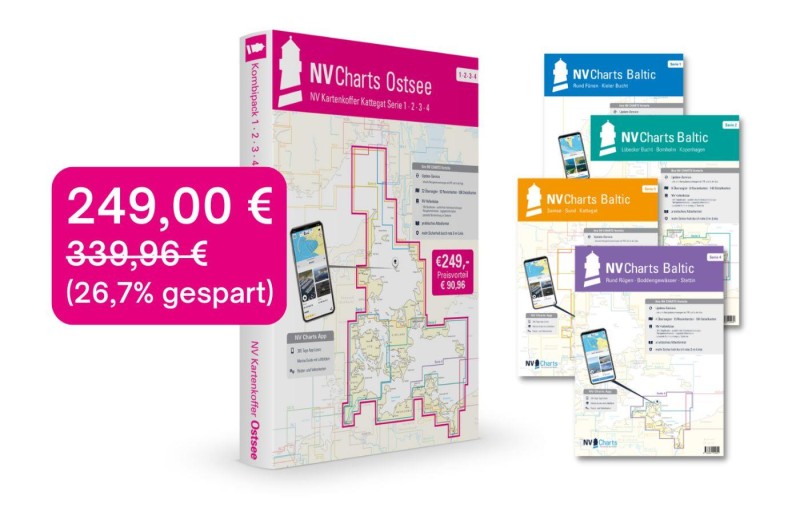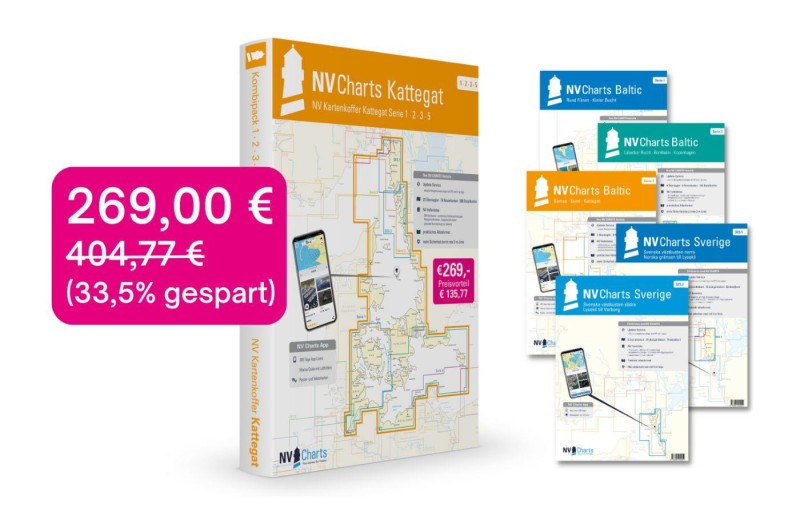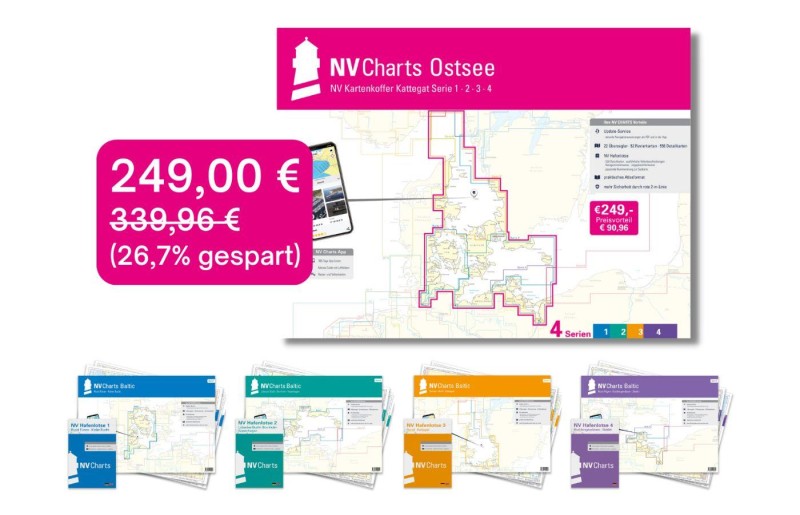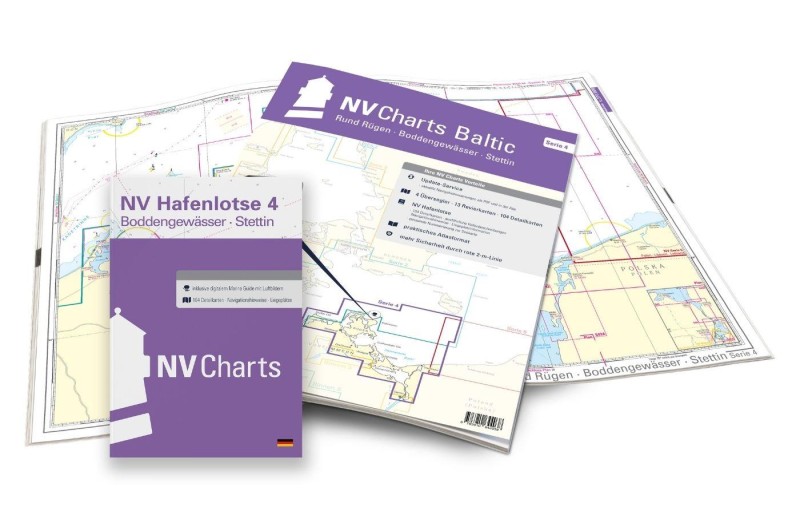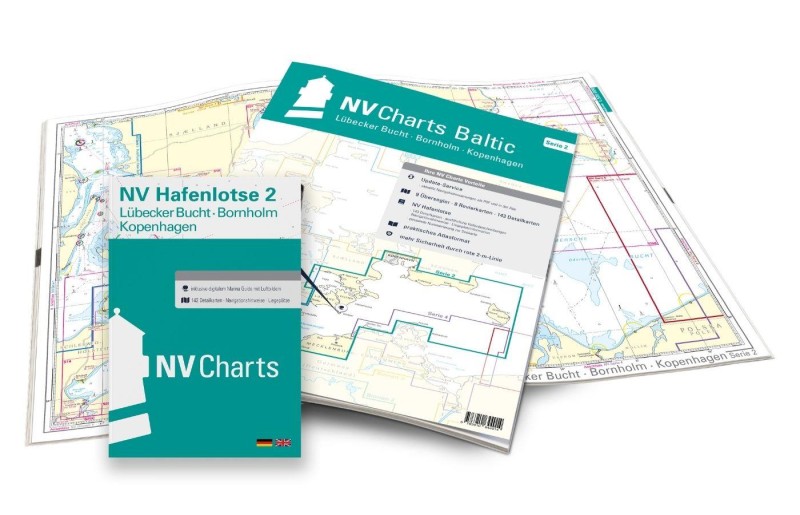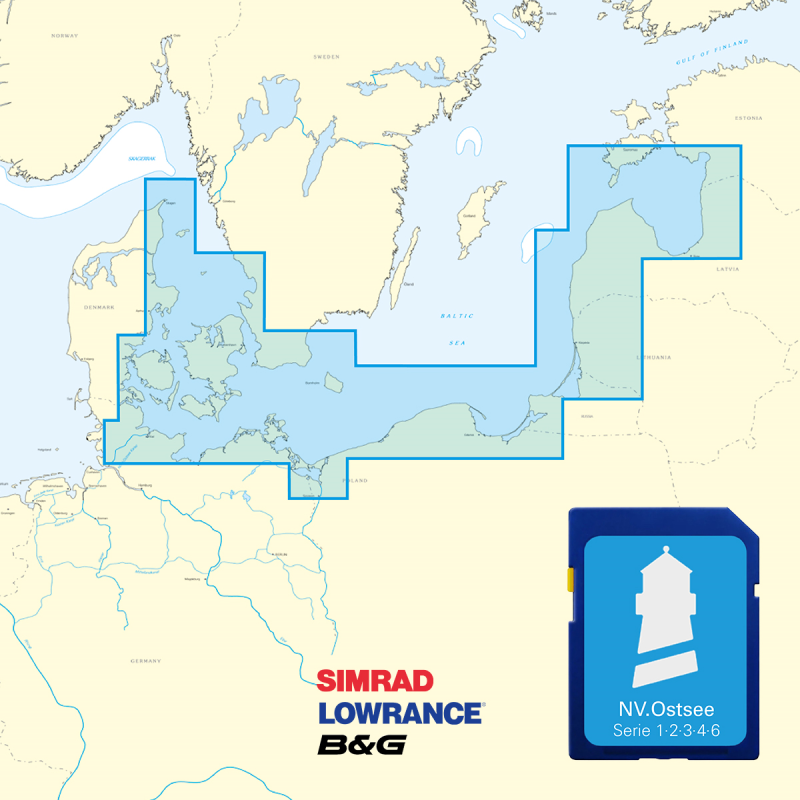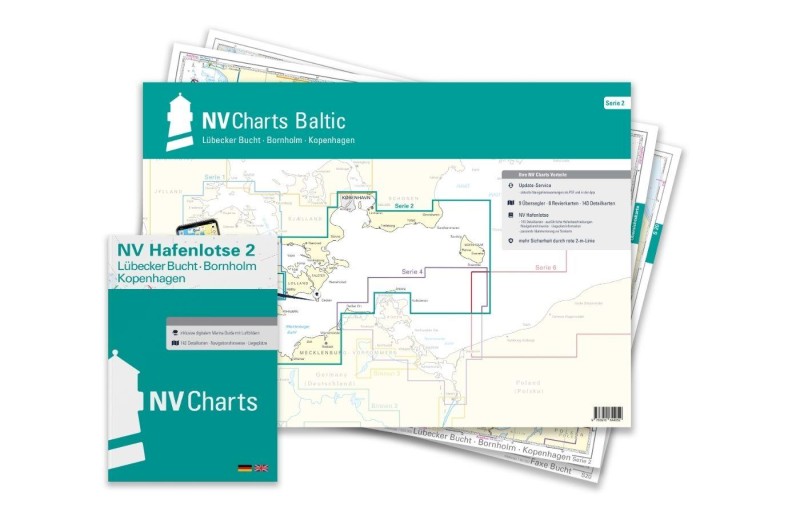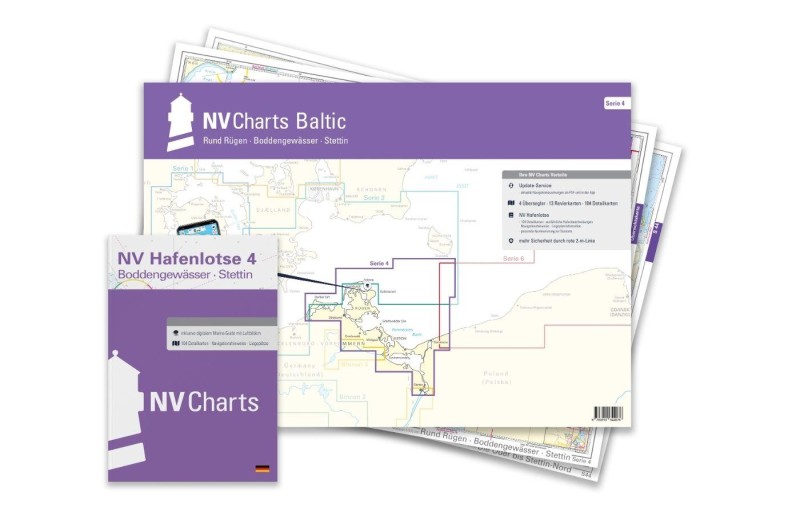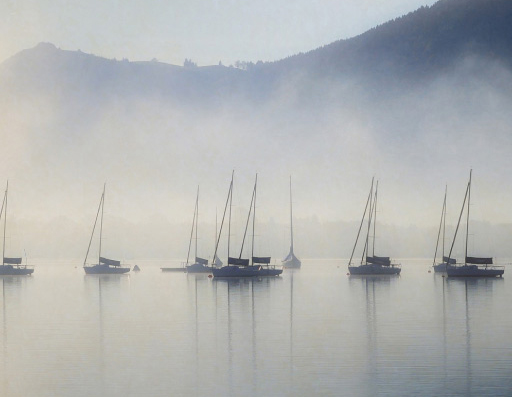Ralswiek
Marina near Ralswiek (Augustenhof)
Latitude
54° 28’ 21.2” NLongitude
13° 27’ 4.3” EDescription
A marina located in a beautiful landscape in the south of the Jasmund Bodden
NV Cruising Guide
Navigation
The approach is only recommended during the day. It takes place from fairway buoy RW1 at 181° in the buoyed fairway up to fairway buoys RW5/RW4. The marina is approached at 150° from the north buoy and then heads for the conspicuous row of dolphins. Approximately 20 m in front of the dolphin, which is equipped with a platform, you then head for the jetty.
During the festival rehearsals and performances (from June to September, daily except Sunday, 6 - 11 p.m.), an anchoring and navigation ban is in place in the extended area of the festival site.
Berths
Guests will find berths in the
boxes of the well-kept water hiking rest area south-east of
the passenger ship jetties.
The passenger ship jetty is closed to pleasure craft.
Surroundings
A restaurant and limited catering facilities are located in the village. Children will find play facilities. The Störtebecker open-air stage nearby is well worth a visit.
NV Land Guide
Unfairly, the Vikings alone have a reputation as "powerful" seafaring merchants who dominated the Mare Balticum. Before and around the turn of the millennium, the Slavic Rans (also known as Rugians) played a no less important role in Baltic trade. Feared as pirates and respected as traders, their influence was even reflected in the naming of a large area of the western and southern Baltic Sea. The Mare Rugianorum, the sea of the Rügen Slavs, was called their trading empire, and Ralswiek was their largest maritime trading center.
Similar in size to Haithabu, the trading center of the Vikings on the Schlei (see: Haddeby), the trade relations of the Rugians of Ralswiek were just as extensive as those of the Schlei Vikings, whereby the Rans benefited from their kinship with the Slavic tribes all the way down to the Balkans.
Excavations provide evidence of long-distance trade to both northern Scandinavia and the Arab countries and give an idea of how extensive the trade must have been.
Among the excavated finds is the largest treasure trove of Arab silver coins from the 9th century ever discovered in northern and eastern Europe, presumably hastily buried before an attack by the enemy. The remains of a burnt house lay above it. It is not difficult to imagine the events associated with this 1000 years ago, nor the fate of the owner. He could have bought many horses, slaves and slave girls for the 2000 coins and the arm ring weighing almost three kilos. But perhaps he would also have had to sacrifice a few of the slaves to please the gods, as their often multi-headed idols demanded more than just sheep, pigs or cattle. There was obviously no sacrificial temple in Ralswiek as in other Slavic settlements. The place of worship and sacrifice (see sketch) was located on the beach in the open air. The human and animal bones found indicate this ceremonial site as well as a burial ground nearby.
The rest of the list of finds, most of which can be seen in the Stralsund Museum of Cultural History (and unfortunately not on site), is long. In addition to vessels made of fired clay, glass beads, bronze jewelry, grinding stones, arrowheads and spearheads and, of course, boats were discovered. Not everything that was found was imported. For example, a smithy and a basket weaver's workshop have so far been found at the site. Wooden nails and grinding stones have also been found.
Experts consider Ralswiek to be a site that holds far more than has yet come to light. It is therefore completely incomprehensible why a new settlement of detached houses was built on the site where Slavic large boats and a burial ground had been uncovered shortly before. It is even more surprising that the boats were buried again! It is said that the owners of the houses were constantly coming across new relics of the trading site during gardening work. In this context, it is surprising how small the archaeologists' current excavation area is in view of the size of the former settlement.
In contrast to the Viking trading site on the Schlei, Ralswiek was not protected by a rampart, but was surrounded by water all around. It was located between the large Jasmund Bodden and an inland lake, which later silted up. The shape of the island meant that the settlement was more elongated than its competitors on the Schlei (see plan).
Of course, the size of the trading center cannot be measured by today's standards. Barely more than 50 huts made of wood and clay with thatched roofs were scattered between the shallow sand embankments. A few fenced-in areas for the animals surrounded the dwellings. Around 15 boat moorings jutted out into the early medieval lake like the points of a ridge. Between them, the boats were moored with the stem facing the land.
Although Ralswiek was the most important Slavic trading centre on Rügen, it was nowhere near as large and influential as the legendary Slavic trading town of Vineta, which lay beneath today's Wollin.
Nearly 400 burial mounds can be found in the Ralswiek Forest, the Black Mountains, most of which are overgrown but can be recognized as distinct elevations in the fields or on the edges of the forest. Elevated landscape points were often chosen for these graves of Slavic rulers or their Germanic predecessors so that the ruler had a beautiful view even after his death.
The Bronze Age grave complex at Woorke (just under 5 km to the southwest) is particularly impressive, consisting of 15 mounds around seven meters high. It is overgrown with hawthorn, beech and oak trees. A beautiful hiking trail (from "Dat Eckhus") leads there. After one kilometer, it branches off to the left from the road between Ralswiek and Gnies. After four kilometers, you first reach Patzig, a village with a church worth seeing. In Patzig, the path continues west for around 500 m and then northwest to the hiking destination.
If you walk north-east from the harbor through the forest of the Black Mountains, you will also come across the megalithic graves, which were erected with enormous effort. The builders of the graves rolled the horse-drawn boulders to the burial site on small tree trunks. Here they used their horsepower, muscles and heads to prove that they already understood something about leverage.
No boulders were piled up for ordinary mortals. They were laid to rest in the burial grounds of Ralswiek. But they were also given grave goods such as weapons and food for the afterlife. The Museum of Cultural History in Stralsund uses the example of Ralswiek to illustrate the disintegration of tribal society and the slow development of an early urban community. However, the conquest of Arkona Castle (1168) also marked the end of the heyday of this maritime trading center on the Great Jasmund Bodden and the Bishop of Roskilde ordered the establishment of a provostry in Ralswiek. From then on, until the Reformation, the church kept a tight rein on maritime trade and ensured that no more human sacrifices were made to pagan deities on the beach. The old provost building has been preserved.
For centuries, the von Barnekows resided in Ralswiek until one of the greatest feudal lords in the history of the island of Rügen deemed the manor appropriate and bought it in 1891. Count Douglas had today's castle built in 1893 in the neo-Renaissance style by Belgian architect Henry von de Velde. Most of the Art Nouveau interior has been preserved. The Barnekows' old castle still stands below the new one.
In the GDR era, the castle was a retirement home, but today it has been renovated and the pile of coal on the terrace has disappeared. Hotel guests now sit here and drink their afternoon coffee with a view of the Wiek.
No less impressive than the castle is the backdrop to the Rügen Festival. 400,000 people were captivated by the Störtebeker spectacle from 1959 to 1961. The last new production on the natural stage was seen by a total of around 270,000 spectators, which speaks for the fascination of the character of Klaus Störtebeker, often stylized as the "Robin Hood of the sea". Störtebeker may have fired the imagination of poets, but there are hardly any records of his life and work. The few documents include a Hamburg treasury account of the costs of the execution and burial of the Likedeelers and the remark in an old chronicle that the Likedeelers were declared fowlers.
Likedeeler means equalizer. They are said to have shared their spoils not only among themselves, but also with the people. Let's believe it, because the story of an adventurer at sea who took from the power-hungry and gave to the poor is too good not to be true. And who doesn't know the legend about the execution of Störtebeker in Hamburg, who demanded that all the Likedeelers he could pass by after his beheading be allowed to survive. He is said to have then managed to walk a few steps past his men without his head and would probably have walked even further if he hadn't been tripped up.
Many of the Likedeelers are said to have been his own, who had nothing to lose. For a while, they actually played cat and mouse with the powerful, only to be crushed between them. In 1390, the Swedish King Duke Albrecht III of Mecklenburg was at war with the Danish Queen Margarethe and the Hanseatic League tried, more badly than well, to mediate. The parties took it in turns to use the pirates (see Skanør) and had difficulties getting rid of them after the war. Störtebeker went from hunter to hunted after the Danes and the Hanseatic League came to terms again.
All in all, Ralswiek is an extremely attractive stage of the journey. A local history memorial has been set up at the entrance to the sets of the Störtebeker Games.
Marina Information
Contact
| Phone | +49 3838 313553 |
| Website | https://www.auf-nach-mv.de/reiseziele/a-hafen-ralswiek |
Surroundings
Electricity
Water
Toilet
Shower
Grocery
Public Transport
Bikerental
Garbage
Comments
You can add comments with the NV Charts App (Windows - iOS - Android - Mac OSX).
You can download the current version at nvcharts.com/app.
Buy nv charts covering this place Clicking one of the products will open the nv charts shop.
Places nearby
Related Regions
This location is included in the following regions of the BoatView harbour guide:
